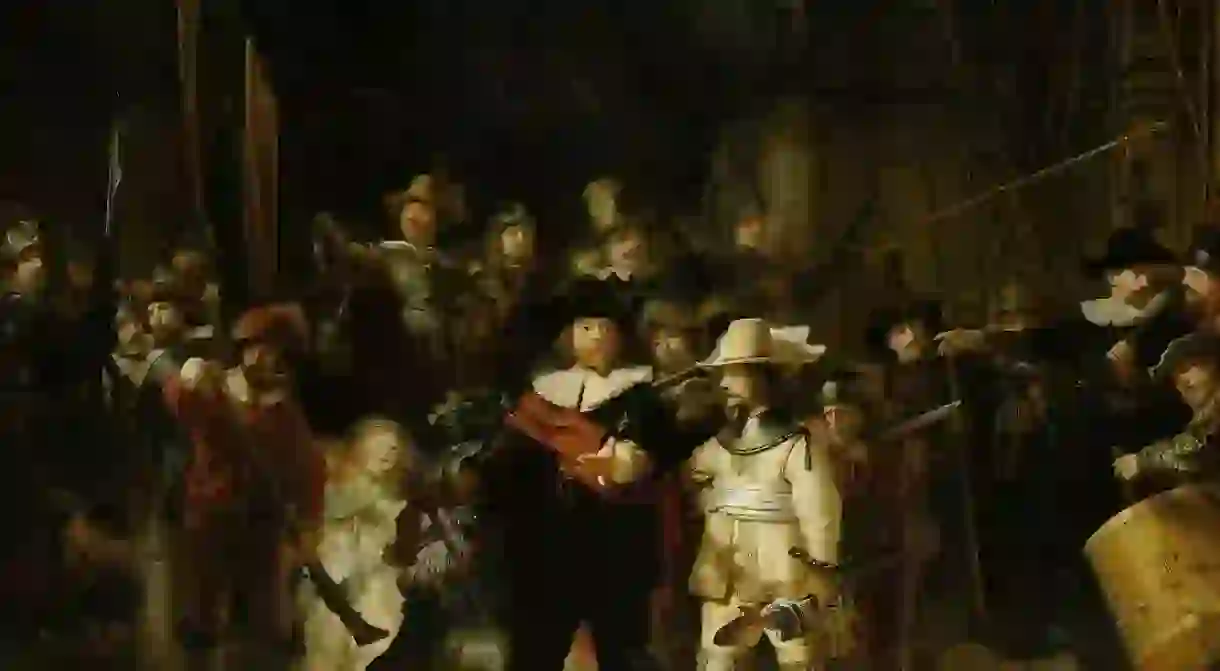The Story Behind Rembrandt's The Night Watch

In 1642, Rembrandt van Rijn was commissioned by the mayor and civic guard leader of Amsterdam, Banning Cocq, to create a group portrait of his shooting company. The resulting painting is now recognised as one of the most important artworks ever created and currently hangs in a custom built room in the Rijksmuseum.
Although there are 34 characters present on the canvas, only 16 were real-life members of militia and each of these men paid 100 Dutch guilders for their portrait. The two most senior officers, Captain Banning Cocq and his lieutenant Willem van Ruytenburch, stand at the front of the picture wearing a red sash and yellow hat respectively. Rembrandt painted the rest of the company as though they were preparing for patrol with several members inspecting their muskets and gesturing beyond the frame.
Rembrandt added several details to the painting in order to introduce symbols associated with the company and musketeers in general. The woman standing behind Banning Cocq, for example, is carrying the militia’s goblet while in the background an ensign waves the group’s flag.
At the time, it was quite common for civic guards or other military troops to commission group portraits that usually hung in their headquarters and many other Dutch masters such as Frans Hals created similar paintings..

Rembrandt’s painting though is among the largest of its kind and the subjects depicted on this massive canvas are almost life size. In fact, the composition was once considerably larger, but was cropped in 1715 after it was moved from its original fittings inside civic guard’s base in Amsterdam to the city’s town hall.
While today Rembrandt’s masterpiece is known as the Night Watch, it was originally untitled and was given its current name after it was covered in a dark varnish, which made the painting appear to take place after dark. Although this coating was removed in the 1940s, the painting is still primarily referred to as the Night Watch, but also bears the longer title Militia Company of District II under the Command of Captain Frans Banninck Cocq.
After moving between several locations from the 17th to 19th centuries (including the Royal Palace and Trippenhuis), the Night Watch was finally installed in the newly built Rijksmuseum in 1885.













